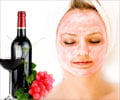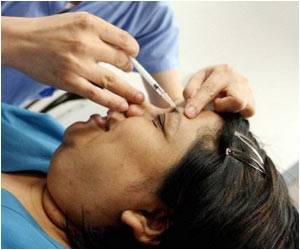While wrinkles, deep creases, saggy areas around the mouth and neck make many cringe in old age, researchers provide evidence that some of the anti-aging methods available in the market
old age means wrinkles, creases and laugh lines, but many anti-aging treatments promise to get rid of these unwanted effects of old age.
University of Michigan scientists assessed a decade of studies and said that these wrinkles and creases are caused due to collagen collapse inside the skin and some existing treatments effectively counteract by stimulating the renewal of new, youthful collagen.The evidences to the statement are drawn from dozens of studies since the early 1990s, conducted primarily by U-M dermatologists, to explain that three types of available skin treatments are effective: topical retinoic acid, carbon dioxide laser resurfacing and injections of cross-linked hyaluronic acid.
They said that all these treatments improve the skin's appearance - and its ability to resist bruises and tears - by stimulating new collagen, which is a key supporting substance, abundant in young skin and is produced in the sub-surface layer of skin known as the dermis.
The results indicate that the breakdown of the dermis' firm, youthful structure is a very important factor in skin aging, which is in fact much easier to fix than genetic factors that others theorize may be involved.
"Fibroblasts are not genetically shot," says John J. Voorhees, M.D., F.R.C.P., chair of the Department of Dermatology at the U-M Medical School and the article's senior author.
It is the fibroblast cells in the skin that are the key producers of collagen.
Advertisement
The researchers believe that the findings will help people make intelligent decisions amid the hype of the multi-billion-dollar anti-aging products industry.
Advertisement
The researchers' findings are based on past studies in which they have explored why certain anti-aging treatments are effective.
In 2007, they examined Restylane, marketed as a dermal filler, and found that injections of the product caused fibroblasts to stretch, promoting new collagen, and also limited the breakdown of collagen.
In another 2007 study, they tested lotions containing retinol, a form of Vitamin A found in many skin-care products, and found it significantly reduced wrinkles and skin roughness in elderly skin by promoting new collagen. Other U-M studies have shown why some laser treatments work and other less powerful ones do not. Carbon dioxide laser resurfacing is effective because it removes the aging dermis; in the three-week regrowth process, new, young collagen is produced.
The researchers said that they provide needed, independent research on the effectiveness of available and future treatments to counteract skin aging.
The study is published in the May issue of Archives of Dermatology.
Source-ANI
RAS/L











